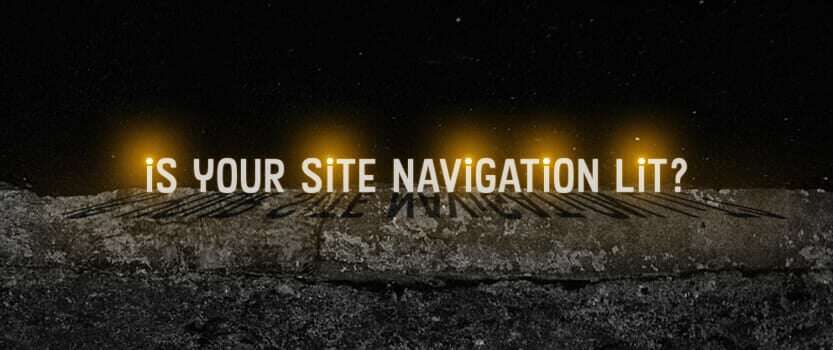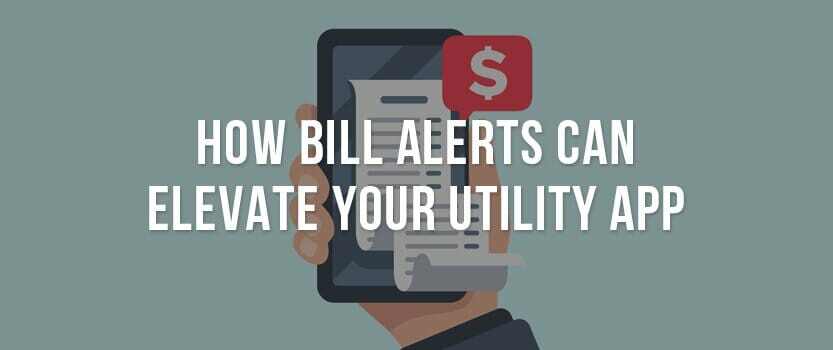4 min read
Is Your Navigation Lit on Your Utility Site?
Navigation Tips for Utility Companies Keep it Light & Easy When it comes to website navigation, little details make a huge impact on...
Improve customer satisfaction and increase operational efficiency with a client portal.
Take control of your operations with customized software solutions.
Help your in-house dev team get more done, faster with our Midwest-based experts.
During this age of COVID, your website must be sleek, easy-to-use, and brimming with useful features that will grab people’s attention. 48% of people decide if a business is credible or not based on its website design.
For the average consumer, small details will mean everything to them when deciding whether or not to place trust in a website or brand. This is especially important in modernizing utilities as well. Paying utility bills can already be stressful, so make the process as seamless as possible with these five must-haves for modernizing utilities.
Minimalist website designs try to include as much information as possible without bogging down the customer with unnecessary website elements. Here are a few factors in creating simple website designs:
These elements will cut down on any distractions that can pull a customer’s attention away from the website. By limiting distractions, your customers will focus more on the content. Thus, the main point of a minimalist design is to keep your customer’s attention on your content and making it very clear where you would like to direct the eye.
There is no one way to make an optimal minimalist website design. There may be so many choices, that it can become overwhelming. But you can experiment with different website designs, and see what works and what doesn’t. Have fun with creating a website that best represents who you are as a brand.
This feature will make an incredible difference for your clients. Auto-pay allows customers to pay for their bills at a scheduled time. It helps make sure that they do not forget about their bills. They can simply set up auto-pay and forget about it.
When considering auto-pay for your website, the importance of payment gateways cannot be stressed enough. These are applications that will help your customers make transactions on your website without directing them off-site. Typically, you have to work with payment gateway providers who ensure privacy and safety.
There are many payment gateway providers to consider. You can work with companies such as Google and Android and install their online payment platforms on your site. Paypal is also a viable online payment platform, especially for those without credit cards.
Furthermore, you can have customers save their payment info on your website as well. Allow them to save up multiple cards so that they can use them quickly in their future transactions. In giving your customers a quick and efficient to make transactions, you can help compel them to continue business with you.
There is still so much more to learn about making the most out of auto-pay. If you want to learn more, refer to our blog post about mastering auto-pay in your utility app.
A great companion feature with auto-pay are bill alerts. This will give customers even more reassurance that they will not forget their payment due dates. Thus, having bill alerts will increase your credibility since customers will know how much time they have to prepare funds for their bills.
Another added effect of having bill alerts is that customers will be likely to pay their bills in full since they have the time to save and prepare their utilities budget. As a result, you and the customer can build a healthy relationship that may influence others to peruse your website.
There are more benefits to bill alerts on utility apps. If you are interested in learning more about the feature, then read our blog post about how bill alerts can elevate your utility app.
Let your users easily see how much energy, water, and other resources they are using. By giving customers a chance to see their energy consumption, they can enact cost-saving measures, and respect for your business will increase as a result.
You can implement your home automation software by putting it on your website, or you can create an app that your users can utilize to keep track of how much energy or water they are using.
A great example of home automation in action is from sense.com. They use their home automation services by providing a monitor that you can then install in your electric panel. You then use an app to check how much energy you are using daily.
Sense also emphasizes that their application can check warning signs for your products, such as if something is using too much energy. Thus, their home automation solutions can help customers with detecting a problem, like a leak or malfunction, before it negatively affects them.
Lastly, make it easy for customers to find you if your business has a physical location. The best way to do this is by implementing a Google Maps widget in your application or implementing Google Maps in HTML.
A good example of this is on Samsung’s page. They have a “Visit Us” section on their “Contact Us” page that directs customers to a series of pages where you input your location and what you need. They will then use that information and show you nearby locations by using a Google Map widget.
For businesses that have only one physical location you can try including a picture of your business and incorporate Street View as well.
Onsharp wishes you all the best in creating the best utility website for your clients. The tips outlined in this article are only the beginning of creating a successful website. Know that Onsharp is ready to help with anything related to your website. You can schedule a free consultation as early as today and brainstorm ideas with our team for creating the best website for your customers.

4 min read
Navigation Tips for Utility Companies Keep it Light & Easy When it comes to website navigation, little details make a huge impact on...

2 min read
The market’s desire for robust utility apps is growing. More and more customers are finding value in accessing their utility accounts from...

3 min read
The “My Account” section of any website serves as a bridge between the user and the website. You need this bridge fully intact, otherwise any...
